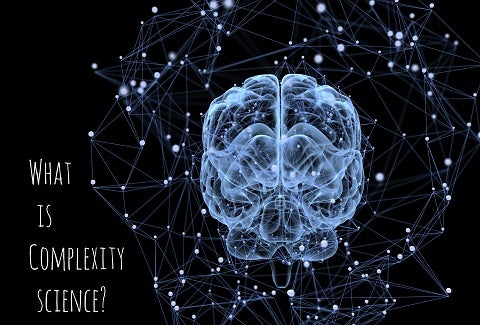By Agustina Calatayud.

What do air traffic and the financial crisis of 2008 have in common with the human brain and the 2015 Ebola epidemic? Can Complexity Science offer us effective solutions to these problems and others?
Recent international events suggest we are living in a time of growing turbulence. Just to mention a few: the 2008 financial crisis and its impact on international trade, employment and economic growth; the rising price of raw materials between 2004-2014 and its impact on food security; SARS and Ebola epidemics and multiple natural catastrophes across the globe.
In this context, the question arises of whether or not people responsible for making policy decisions have sufficient tools available to deal with a reality that is increasingly complex.
A new scientific field exists that can contribute decisively to discovering effective solutions, even in this kind of turbulent environment. It is called Complexity Science and it carries with it the promise of a true scientific revolution.
Originating in physics and biology, Complexity Science has gradually been utilized in a number of disciplines, including engineering, economics, sociology and public policy. Its allows us to understand, predict, control and change the functioning of complex systems, which make up our everyday reality.
What is a complex system? It is a set of multiple parts, different from each other, interacting to produce an outcome. By interacting, the operation of each part fits into the functioning of the other, creating the collective behaviour of the system, which is different from the actions of each individual part.
The human brain, air traffic, the financial system, and the spread of disease are all examples of complex systems.
Take the case of air traffic. The International Air Transport Association estimates that this year the number of passengers worldwide will reach 3.6 billion. Thousands of flights, airlines and airports, organized by control, security and management systems, will allow these people to reach their destinations.
Similarly, billions of neurons, cells and blood vessels that make up the human brain continuously interact, so we can perform cognitive and behavioral functions through the most complex system ever known.
Beyond focusing on one aspect or specific part of a system, such as the performance of an airport within the air traffic network, Complexity Science can help us “zoom out”, to gain perspective and identify multiple parts of a system, to discover the patterns that govern their interactions and behaviors.
Applying Complexity Science to neuroscience promises to provide us with the greatest of scientific discoveries: understanding how the human brain works.
However, why is this of interest to public policy? Because, a broader and more comprehensive perspective of reality, coupled with analysis of the underlying patterns that guide it, Complexity Science can help us anticipate problems and make better decisions in the world of policy.
In the financial sphere, different regulatory agencies have adopted this analytical tool to help identify the connectivity of financial institutions within a system.
This information is used to design regulations to prevent events such as those of the 2008 financial crisis, where risky strategies adopted by one part of the system – in a context of incomplete regulatory frameworks – brought the entire system to the brink of collapse.
In the area of health, this premise is used to develop computational models to simulate the speed at which a disease can spread, and to predict the affected population and routes of infection. As in the case of the Ebola crisis in 2015, the results of the simulations are used to design national and international strategies for the prevention of epidemics.
These are only a few examples of Complexity Science’s potential in different public policy areas.
The most pressing problems of development in Latin America and the Caribbean are complex. Poverty, inequality, low productivity and the effects of climate change require a comprehensive view in order to identify the multiple causes and the most effective set of solutions.
Moreover, the multiple dimensions of these problems require a new way of working, integrating different specialized sectors and increasing collaboration between traditional public administration sectors.
Conscious of these challenges, governments in the region have implemented various cross-sector coordination mechanisms and have adopted new ways of working that encourage collaboration. Integrated information systems; open working spaces; staff training in communication skills, teamwork, leadership and “design thinking”; support for the creation of knowledge networks; and the introduction of metrics to measure collaboration in the performance evaluations of staff are some of the strategies that have been adopted.
It may be premature, but we must ask: are we facing a revolution in the way we understand and work on public policy? Through Complexity Science, can we learn new development techniques that prove to be effective? Will we be capable of finding solutions to the complex development problems that our region faces?
Agustina Calatayud is a specialist in capital markets at the Inter-American Development Bank, where she works on project finance for private sector development. She is a PhD candidate in Mechanical Engineering and Systems at the University of Newcastle, UK, and holds master’s degrees from the University of California, Berkeley, and the University of Padua, Italy. Her area of expertise is the management of complex systems applied to transport, supply chains and financial systems.


Leave a Reply